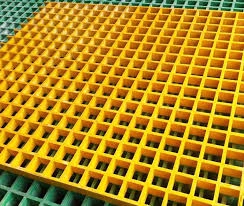loading...
- No. 9, Xingyuan South Street, Dongwaihuan Road, Zaoqiang County, Hengshui, Hebei, China
- admin@zjcomposites.com
- +86 15097380338
- Welcome to visit our website!
frp piles
The Significance of FRP Piles in Modern Construction
As the construction industry continues to evolve, the pursuit of innovative materials that enhance structural performance, durability, and sustainability has gained significant momentum. Among the various innovations, Fiber Reinforced Polymer (FRP) piles have emerged as a crucial advancement in foundational engineering. These composite materials are now widely recognized for their exceptional properties and diverse applications, providing a significant alternative to traditional concrete and steel piles.
Understanding FRP Piles
FRP piles are structural elements made from a composite material consisting of a polymer matrix reinforced with fibers. The fibers can be made from various materials, including glass, carbon, or aramid, which impart unique characteristics to the polymer. The primary advantage of FRP is its high strength-to-weight ratio, corrosion resistance, and ability to withstand various environmental stresses. These attributes make FRP piles particularly suitable for challenging conditions such as marine environments, where exposure to saltwater can severely compromise traditional pile materials.
Advantages of FRP Piles
One of the standout features of FRP piles is their remarkable resistance to corrosion. Unlike steel, which can corrode in moist or saline conditions, FRP is impervious to chemical degradation, making it a favored choice for applications in coastal areas, wastewater treatment plants, and other corrosive environments. This resistance not only extends the lifespan of the structure but also reduces maintenance costs over time.
Additionally, FRP piles are significantly lighter than their concrete or steel counterparts. This reduced weight translates into lower transportation costs and easier handling during construction, especially in remote or difficult-to-access locations. Furthermore, the ease of installation often leads to shorter project timelines, resulting in increased efficiency and reduced labor costs.
Moreover, the versatility of FRP piles allows for customized designs tailored to specific engineering requirements. Their manufacturing process can be adjusted to create piles of varying shapes, sizes, and stiffness, allowing engineers to optimize load-bearing capacities while considering site-specific conditions. This flexibility is a game-changer in designing unique structures that meet both aesthetic and functional demands.
frp piles

Environmental Benefits
In an era where sustainability is at the forefront of construction practices, the environmental advantages of FRP piles cannot be overlooked. The production of FRP materials typically involves a lower carbon footprint compared to traditional materials, and their longevity leads to less frequent replacement, thereby minimizing waste. Additionally, FRP is often manufactured with recyclable materials, contributing to a circular economy in construction.
Applications of FRP Piles
The versatility of FRP piles opens the door to a wide array of applications. They have been utilized extensively in bridge foundations, waterfront structures, and even in buildings susceptible to high wind loads or seismic activity. Their lightweight properties make them ideal for underpinning existing structures and retrofitting aging foundations without causing additional stress on the original systems.
Moreover, FRP piles are gaining traction in infrastructure projects where environmental factors pose risks to structural integrity. Their resilience in extreme conditions has made them a popular choice for renewable energy initiatives, such as offshore wind farms, which require robust and durable foundation systems to withstand harsh marine environments.
Conclusion
In conclusion, the introduction and adoption of Fiber Reinforced Polymer piles represent a significant leap in construction techniques, offering engineers and builders innovative solutions to contemporary challenges in foundation design and support. With their unparalleled durability, corrosion resistance, and environmental benefits, FRP piles are undoubtedly shaping the future of construction and directing a sustainable approach to building infrastructure. As the industry continues to embrace these modern materials, the potential applications and advantages of FRP piles will likely expand, paving the way for even more resilient and efficient construction practices worldwide.
-
Why Choose a Galvanized Water Tank for Your Storage NeedsNewsMay.21,2025
-
The Strength and Durability of FRP GratingNewsMay.21,2025
-
The Importance of Water Treatment Systems for Clean and Safe WaterNewsMay.21,2025
-
The Advantages of FRP Rebar for Construction ProjectsNewsMay.21,2025
-
Say Goodbye to Hard Water with a Reliable Water SoftenerNewsMay.21,2025
-
Maximize Your Water Storage with a Sectional Water TankNewsMay.21,2025
-
The Power of Filter VesselsNewsMay.19,2025
